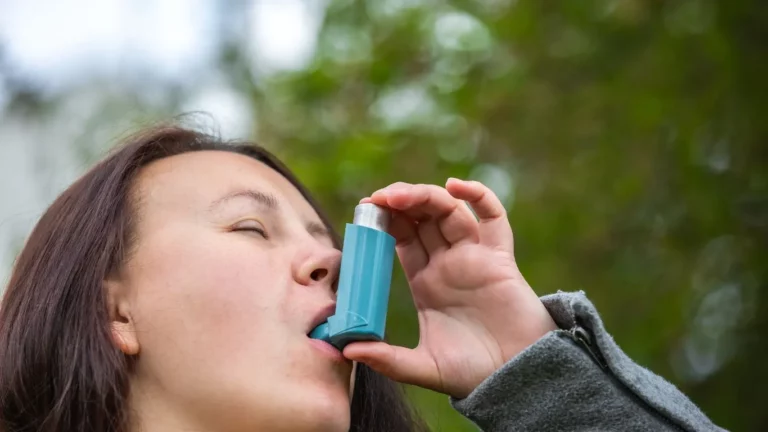How to Protect Your Home from Asthma Triggers: Simple Tips for Safety
If you’re anything like me, working as a Pulmonary Nurse has made you hyper-aware of the air you breathe — especially indoors. That’s why one of the first things I talk about with families dealing with chronic respiratory issues is how to protect your home from asthma triggers. You’d be surprised how many people think asthma is just something that gets triggered outside by pollen or smog, but honestly? Some of the worst culprits are lurking inside our homes, right under our noses — sometimes literally.
Why Your Home Might Be a Hidden Asthma Minefield

From years of bedside experience, I’ve seen firsthand how home environments can either soothe or sabotage someone’s asthma. You might think keeping a clean home is enough — vacuum once a week, light some candles, maybe spritz some air freshener — but here’s the kicker: those very things might be setting off your or your child’s asthma. No kidding. I had a patient once who couldn’t figure out why their child kept wheezing more at night… Turns out the culprit was the plug-in air freshener right by their bed. Wild, right?
Common Indoor Triggers That Go Unnoticed
Let’s break down some sneaky indoor triggers you might be overlooking:
- Dust mites – These guys are everywhere: your mattress, pillows, carpets, even your curtains. You can’t see them, but they’re probably causing trouble.
- Mold and mildew – Bathrooms and basements are common breeding grounds, especially in humid climates or older homes.
- Pet dander – Even if you’re a clean freak, your furry friend might be leaving behind more than just love and cuddles.
- Strong scents – Candles, incense, perfumes, even some cleaning products release volatile organic compounds (VOCs) that can irritate sensitive lungs.
- Smoke – This includes cigarette smoke (obviously), but also wood-burning fireplaces and cooking smoke if your kitchen’s not well-ventilated.
Creating an Asthma-Safe Zone at Home

Okay, so now you’re probably wondering — what can you do about all this? Good news: you don’t need to turn your house into a sterile lab. Just a few smart, intentional changes can seriously level up your air quality and help reduce flare-ups.
Start With the Bedroom
Since we spend a third of our lives sleeping (if we’re lucky!), the bedroom is a great place to start. Here’s what I usually recommend to my patients:
- Use allergen-proof covers on mattresses and pillows to block dust mites.
- Wash bedding weekly in hot water — yep, hot — to kill mites and bacteria.
- Remove stuffed animals or wash them often. Sorry, Mr. Snuggles.
- Keep pets out of the bedroom. I know, I know… but your lungs will thank you.
Humidity Control Is a Game-Changer
One thing I tell every asthma-prone household? Get a hygrometer. These little gadgets measure humidity levels and help you stay in that sweet spot — around 30% to 50%. Too humid, and you’re inviting mold and dust mites. Too dry, and you might trigger coughing fits and nosebleeds. If your home runs humid (looking at you, Florida and coastal zones), a dehumidifier can make a huge difference.
Ventilation: The Unsung Hero of Asthma Prevention

This one’s big, and it’s often overlooked. Proper airflow can dilute and remove airborne triggers before they settle in. I had a family that completely turned their kid’s symptoms around just by installing an exhaust fan in the bathroom and cracking a window during showers. Easy fix, big results.
Tips for Better Airflow
- Open windows when possible – especially during activities that release moisture or fumes (like cooking or showering).
- Use exhaust fans in kitchens and bathrooms religiously.
- Consider an air purifier with a HEPA filter for high-traffic or high-risk rooms.
- Keep HVAC systems clean and change filters regularly — dirty filters can recirculate irritants.
It might sound like a lot, but trust me — once you make these changes, they become second nature. Plus, watching someone breathe easier at home because of a few smart tweaks? There’s nothing better. I’ve seen kids go from nightly inhaler use to sleeping peacefully through the night. That’s why I’m so passionate about this topic — because I know firsthand that asthma doesn’t have to control your home life. You can take charge, and I’m here to help you do just that.
Minimizing Asthma Triggers in the Kitchen

Now, let’s talk about one of the busiest (and most potentially trigger-filled) rooms in the house: the kitchen. I know, cooking is supposed to be fun, but for someone with asthma, it can feel like a battleground. From smoke and fumes to food particles floating around, the kitchen is full of potential irritants. But don’t panic — there are plenty of ways to make it a safer zone for everyone.
Reducing Fumes and Smoke
One of the most common kitchen-related asthma triggers is the smoke and fumes produced while cooking. Whether you’re frying, grilling, or even just heating something in the microwave, it’s important to ventilate properly. I can’t tell you how many families I’ve worked with who had no idea that even a quick stir-fry could fill the air with particles that aggravate asthma.
Here are some tips I suggest to my patients:
- Use your range hood or vent fan every time you cook — even for simple things like boiling water. These can help push fumes outside rather than letting them circulate in the house.
- Open windows when possible, especially during high-heat cooking. Fresh air can help dilute pollutants and keep your kitchen from becoming a mini sauna.
- Use an air purifier in or near the kitchen to filter out smoke and airborne particles. A HEPA filter is ideal here.
Preventing Food-Related Triggers
Aside from the fumes, certain foods can actually trigger asthma symptoms too — like the strong odors from onions, garlic, or even spicy dishes. If you’re making chili, for example, the smell can linger long enough to bother someone with asthma. And, of course, the real kicker: allergens in foods like peanuts or shellfish can trigger severe reactions in certain people.
Here’s a few easy adjustments that could make all the difference:
- Try to limit strong-smelling spices or cook them in a well-ventilated area.
- Store foods like nuts or shellfish in sealed containers to prevent accidental exposure, especially if you have food allergies in the household.
- Wash the kitchen surfaces thoroughly after cooking to remove any residue that could trigger asthma.
Air Quality: A Game-Changer for Asthma Management

Speaking of air purifiers, let’s take a closer look at how improving air quality can drastically reduce asthma triggers. This is a game-changer, especially for families living in areas with poor outdoor air quality or those with limited access to cleaner environments.
As someone who’s worked in hospitals for years, I’ve seen just how much cleaner air helps my patients. When air quality inside the home is good, asthma symptoms often lessen. It’s like giving the lungs a break, you know? That’s why I recommend using an air purifier, especially in bedrooms or places where asthma attacks seem to worsen. I’ve seen people improve in just a week or two of using one regularly.
Choosing the Right Air Purifier
Not all air purifiers are created equal. If you’re serious about tackling asthma triggers at home, here’s what to look for:
- HEPA filters are a must — they trap tiny particles like dust, pollen, and pet dander that can cause asthma flare-ups.
- Activated carbon filters can help remove odors like smoke or cooking smells, making your home even more comfortable for someone with asthma.
- Size matters — make sure the purifier is appropriate for the size of the room where you plan to use it. A small purifier for a large room won’t be effective.
How Pets Can Affect Indoor Air Quality

Let’s talk pets for a second. I know, for a lot of families, their dog or cat is a beloved member of the household, and I get it — I’m a pet lover too! But, for someone with asthma, pets can be a major indoor trigger. Pet dander, which is made up of tiny bits of skin shed by animals, can linger in the air and cause problems. Even if you don’t see it, it’s there, floating around.
Reducing Pet-Related Triggers
If you or a loved one has asthma and you have pets, don’t worry — you don’t have to give up your furry friends. There are plenty of ways to make the home environment safer while still enjoying their company:
- Groom your pets regularly — bathing and brushing your animals can significantly reduce the amount of dander in your home.
- Keep pets out of the bedroom (this one’s a biggie) — even if you love cuddling with them, it’s best to keep them out of areas where asthma sufferers sleep or spend a lot of time.
- Clean your home frequently — vacuum with a HEPA filter and wash your pet’s bedding often to reduce dander buildup.
Remember, just because your home is filled with pet love doesn’t mean it has to be filled with triggers. A few changes can make a huge difference in your asthma management while still keeping your furry companion around.
Managing Asthma Triggers in the Bathroom

The bathroom might seem like a place to relax and unwind, but for those with asthma, it can be a tricky space. Between the hot water, steam, and potential for mold buildup, this small room can become a major asthma trigger zone. I’ve seen plenty of patients complain about asthma flare-ups after a long shower or bath, and it usually boils down to humidity and mold. But don’t worry, it’s easy to make the bathroom a more asthma-friendly place with just a few adjustments.
Control the Humidity
Excessive humidity in the bathroom creates the perfect environment for mold and mildew to thrive. This is especially problematic for asthma sufferers because mold spores can cause serious breathing problems. To tackle this, it’s all about ventilation and controlling moisture levels.
- Install an exhaust fan if you don’t already have one. A good exhaust fan can pull moist air out of the room and prevent it from lingering after a shower.
- Keep the bathroom window open (if weather permits) to allow fresh air to circulate and reduce humidity levels.
- Use a dehumidifier in the bathroom to help maintain the right humidity level. Aim to keep it between 30-50% to avoid the growth of mold.
Clean Regularly to Prevent Mold
Mold thrives in warm, damp environments, which is exactly what a bathroom can become if it’s not cleaned properly. I always recommend to my patients that they clean bathroom surfaces regularly, especially around the shower or bathtub. Here’s how you can do it:
- Wipe down surfaces after every shower to remove excess moisture.
- Use a mold-resistant shower curtain or replace your curtain regularly to prevent mildew buildup.
- Regularly clean grout lines with a mixture of vinegar and water or a commercial mold cleaner to keep your bathroom fresh and free from dangerous spores.
Creating an Asthma-Friendly Home Environment: Additional Tips

By now, you’ve gotten a good idea of how to tackle some of the most common asthma triggers in your home. But let’s dive into a few more practical tips to help you make your home even more asthma-friendly.
Invest in Non-Toxic Cleaning Products
If you’re like most people, you probably have a cabinet full of cleaning products that you use to keep your home sparkling. But did you know that some of those products can actually irritate your airways, especially if you have asthma? Many cleaning products contain harsh chemicals, VOCs (volatile organic compounds), or fragrances that can aggravate respiratory conditions.
To keep your home asthma-friendly, consider switching to non-toxic, eco-friendly cleaning supplies. Brands that focus on natural ingredients, like baking soda, vinegar, and essential oils, are great choices. I’ve worked with many families who made the switch and reported significant improvements in their asthma symptoms. It’s all about reducing those irritating chemicals in the air!
Choose the Right Flooring
Believe it or not, your choice of flooring can have an impact on asthma management. Carpets, especially older ones, tend to trap dust, pet dander, and other allergens, which makes them a breeding ground for asthma triggers. While it’s not always realistic to replace your carpet, there are other solutions that can help:
- Vacuum regularly using a vacuum cleaner with a HEPA filter to trap dust and dander.
- Consider switching to hard flooring (like wood, tile, or laminate) that doesn’t trap allergens. It’s easier to keep clean and reduces the number of allergens in the air.
- Use area rugs instead of wall-to-wall carpet. Just make sure they’re washable and cleaned frequently.
References
For further information on asthma management and environmental triggers, I highly recommend checking out the following trusted sources:
- National Institutes of Health (NIH)
- Health.com
- Asthma UK
- Centers for Disease Control and Prevention (CDC)
Disclaimer
The information provided in this article is for general informational purposes only and is not intended as medical advice. If you or someone you know is struggling with asthma or any other health condition, please consult a healthcare professional or specialist for personalized advice and treatment. The recommendations in this article are based on personal experience and general best practices; however, individual needs may vary.

Bianca Nala is a compassionate Nurse Practitioner with a strong background in primary and respiratory care. As a health writer for Healthusias.com, she combines her clinical expertise with a talent for clear, relatable storytelling to help readers better understand their health. Bianca focuses on topics like asthma, COPD, chronic cough, and overall lung health, aiming to simplify complex medical topics without losing accuracy. Whether she’s treating patients or writing articles, Bianca is driven by a single goal: making quality healthcare knowledge accessible to everyone.






